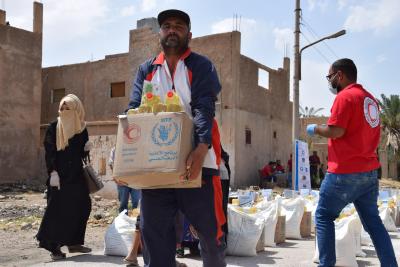WFP revise world hunger stats with poorest hit hard

ROME – The World Food Programme's (WFP) projections of the number of people to be pushed into food insecurity by COVID-19 has been updated, with new estimates based on real-time monitoring that the number of hungry people will increase by as much as 270 million before the end of 2020, an 82 per cent increase from before the pandemic took hold, according to a WFP press release.
The WFP announcement came on Monday, alog with a massive rise in the number of hungry peoplet that the WFP plans to assist around the world. The WFP is undertaking the biggest humanitarian response in its history, ramping up the number of people it assists to up to 138 million from a record 97 million in 2019.
“The frontline in the battle against the coronavirus is shifting from the rich world to the poor world,” said David Beasley, WFP’s Executive Director. “Until the day we have a medical vaccine, food is the best vaccine against chaos. Without it, we could see increased social unrest and protests, a rise in migration, deepening conflict, and widespread under-nutrition among populations that were previously immune from hunger.”
Sustained funding is urgently required to respond to the needs of the most vulnerable during the pandemic. WFP is appealing for almost five billion dollars over the next six months for its life-saving work in 83 countries.
The pandemic has unfolded at a time when the number of severely food insecure people in the world had already risen by nearly 70 per cent over the last four years, compounding the effects of climate change, conflict, and socio-economic shocks in regions that had previously escaped severe levels of food insecurity.
The fallout from the pandemic is being felt hardest in Latin America, which has seen an almost three-fold rise in the number of people requiring food assistance, and among urban communities in low-and-middle-income countries, many of which are being dragged into destitution.
Spikes in hunger are also evident in West and Central Africa which has seen a 135 per cent jump in the number of food insecure people as well as in Southern Africa where there has been a 90 per cent rise.
Coronavirus infection levels are climbing at the very moment when food stocks in some parts of the world are already low, with many farmers awaiting crops from harvests.
Hurricane and monsoon seasons are getting underway, while record locust invasions in East Africa and outbreaks of conflict are adding to an already challenging outlook for the world’s hungry.
“This unprecedented crisis requires an unprecedented response. If we do not respond rapidly and effectively to this viral threat, the outcome will be measured in an unconscionable loss of life, and efforts to roll back the tide of hunger will be undone,” Beasley said.
jmj


